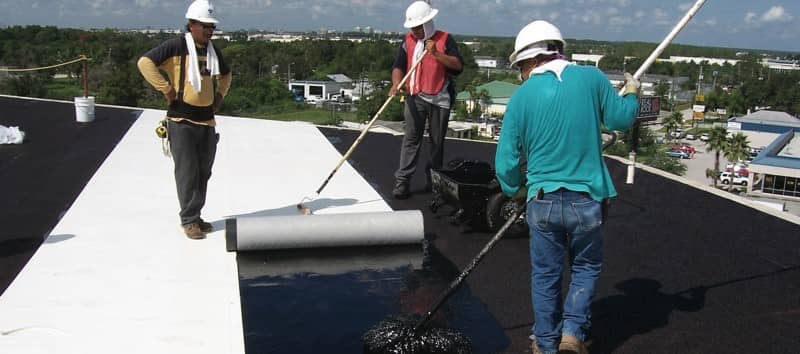For anyone that wants to extend the life of their commercial roofing system, the first step is to establish an inspection plan. By performing regular roof inspections, you can detect problems early, allowing you to minimize repairs and prevent premature failure.
However, before you establish your inspection plan, there are two key factors you need to keep in mind, your environment & climate and the status of your roof.
The Environment
Most roofing problems are caused by weather elements. Therefore, the environment should be a major factor in developing the checklist for your inspection routines. If you are located in an environment with mild weather, minimal winds, and very few trees, then the building would be considered low-risk. However, properties located in areas prone to hurricanes, hailstorms, and strong winds are considered very high risk. Once you know the risk of your roofing system based on the environment, you can make a more informed decision of how frequently you will need to carry out an inspection.
Status of the Roof
Does the roof have a lot of foot traffic? Does your HVAC team access the roof on a regular basis when servicing your heating and cooling systems? Is the roof used for any activity that results in a lot of pressure or weight? All these factors can increase the risk to your roof. The more activity you have on the roof, the faster it will wear and the greater the chance that some kind of damage may occur.
Developing the Actual Inspection Program
Once you’ve determined the risk level of your roof, the next step is to put the inspection plan in writing. Here are the steps you need to follow to create an effective inspection program that will help you enhance the performance of your roofing system;
Step 1: Schedule Regular Inspections Every Six Months
When carrying out the semi-annual inspections,
- Pay particular attention to perimeter areas of the roof and flashings where the roof meets the wall.
- In autumn, address any preventive maintenance issues before winter arrives.
- In spring, identify any damage that might have been caused by the severe winter weather and determine the appropriate repairs.
Step 2: Inspect After Major Weather/Construction Events
Start the inspection inside the building. Check interior walls and ceilings for signs of cracks, water strains, and settling of foundation walls.
Step 3: Check the Key Elements
These usually include but are not limited to:
- Roof covering condition
- Roof edging/fascia
- Flashing condition
- Supporting structures
- Roof drains & scuppers
- Pitch plans
- Roof penetrations
- Expansion joint covers
- Lightning protection systems
- Evidence of “pooling” or standing water
Your commercial roofing maintenance program should aim to:
- Keep the roof clean and free of debris
- Keep your drainage systems clear and functional
- Limit penetrations of the roof
- Repair areas with standing water or ”ponding”
- Restrict roof access to authorized personnel only
- Train maintenance personnel on ongoing maintenance needs
- Regularly check sloped roofs with overhangs for signs of ice dams and further insulate the attic as necessary
Step 4: Keep Detailed Records
By keeping accurate records of every inspection you’ve performed on your roof, you’ll be able to ensure that problem areas are properly monitored and prevent future damage to your roofing system.
If you can keep your commercial roofing system clean and in optimal condition through regular maintenance guided by an effective inspection program, you’ll be able to maintain the integrity of the roof and prolong its life by many years. Contact us today to speak with a FiberTite technical representative for assistance with your roofing inspection.
Content based on information found in this Red River Roofing blog.
-1.png?width=500&height=271&name=FiberTite_Only%20(500px%20wide)-1.png)



-1.png)